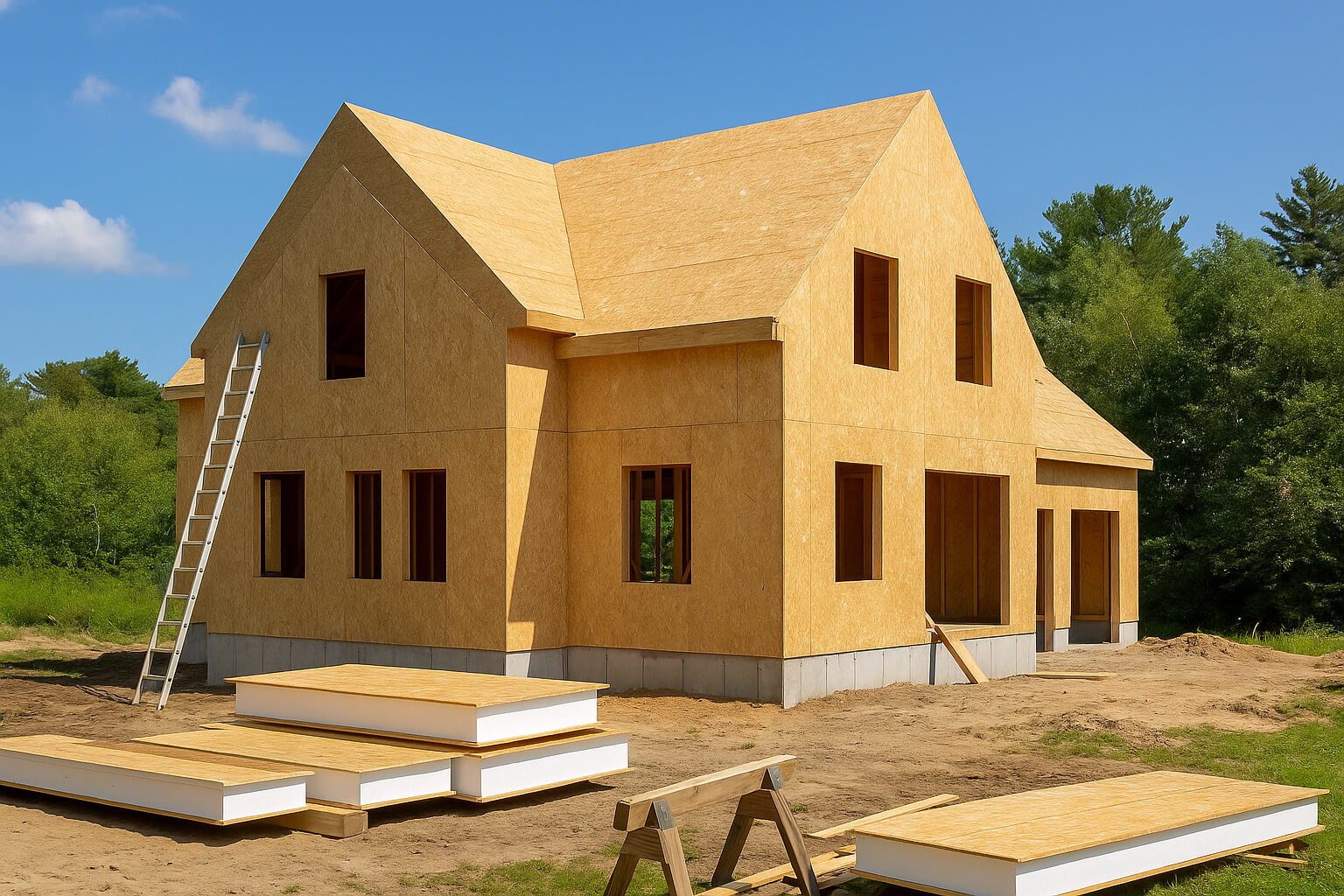If you’re working with SIP home buyers, chances are they’re not just looking for a place to live—they’re searching for a smarter way to live. Today’s eco-conscious home shoppers want more than square footage and curb appeal. They’re thinking in kilowatts, carbon footprints, and long-term performance. That’s where SIPs (Structural Insulated Panels) come into play. These high-performance panels aren’t just a building material—they’re a powerful selling point.
So, how do you translate this to your buyers? In this guide, we’ll show you how to confidently pitch SIP home benefits, highlight energy-efficient home selling points, and master the art of green home marketing that resonates with future-focused buyers.
Understanding the Energy-Conscious Buyer
Before you sell, understand who you’re selling to.
SIP home buyers are different. They’re usually:
- Environmentally aware
- Budget-savvy when it comes to energy use
- Tech-forward (they read energy reports and utility breakdowns)
- Looking for long-term value, not just trendy finishes
These buyers care about performance as much as aesthetics. Your pitch must reflect this mindset. Focus on energy-efficient home selling points over flashy design features. In short: show them how the home works, not just how it looks.
SIP Panels: A Quick Overview
So what exactly are SIPs?
Structural Insulated Panels (SIPs) are made by sandwiching a rigid foam core between two structural facings—typically OSB. They offer:
- Superior insulation
- Airtight construction
- Faster build times
- Lower long-term operating costs
When it comes to SIP home benefits, the real charm lies in the numbers. Up to 60% energy savings? Yes. Less air leakage than conventional framing? Absolutely. SIPs don’t just meet the code—they exceed it.
The Performance Pitch: What Matters to Green Buyers
Here’s the strategy: let performance speak louder than promises.
Focus your selling points on measurable outcomes:
- Reduced energy bills: This is music to the ears of any SIP home buyers.
- Year-round comfort: Fewer temperature fluctuations mean a more livable space.
- Quiet interiors: A lesser-known perk of SIPs—fantastic sound insulation.
Use buyer-friendly language when sharing energy-efficient home selling points. Skip the jargon and explain how SIPs feel to live in.
Highlighting Energy Savings and ROI
Let’s talk money—because even eco-conscious buyers want bang for their buck.
Key messages to drive home:
- Lower monthly utility bills
- Federal and state energy efficiency incentives
- Long-term durability that minimizes repair costs
Back up your points with real figures. Many builders report homes using SIPs cut energy consumption by 40–60%. When you’re targeting SIP home buyers, pairing comfort with savings is a winning combo. It’s where energy-efficient home selling points intersect with real-life perks.
Telling the Sustainability Story
For energy-conscious buyers, a SIP home isn’t just a structure—it’s a statement. You’re not selling walls and windows. You’re offering the opportunity to live with purpose. Weave green home marketing into your storytelling by showing:
- Lower carbon footprint: Thanks to reduced energy use, SIP homes shrink greenhouse gas emissions from day one.
- Less construction waste: SIP panels are precision-cut off-site, meaning fewer materials end up in landfills.
- Eco-friendly materials: Many SIPs use recyclable or renewable components, reinforcing the long-term sustainability story.
SIP home benefits are both practical and emotional. Tell stories that tap into the buyer’s values. Buyers want to feel good about their choices. Show them that by choosing a SIP home, they’re not just investing in efficiency—they’re joining a larger movement toward responsible, resilient living.
Case Studies: What Works in Real Sales
Real stories make a real difference—especially for SIP home buyers who want proof that performance pays off.
Sarah & Tom – Portland, Maine
Tired of high heating bills, Sarah and Tom opted for a SIP home. The result? Winter heating costs dropped from $250 to just $80/month, and their home stays consistently warm.
“We don’t even touch the thermostat anymore—it just stays comfortable,” says Tom.
The Greenfields – Concord, NH
With a daughter who has asthma, Rachel and David chose SIPs for better indoor air quality. The airtight design made a noticeable difference.
“Her breathing has improved, and the air feels so fresh,” Rachel shares.
They also loved how fast the home went up—just seven weeks from foundation to frame.
Mark Henson – Builder in Vermont
Mark has built over 30 SIP homes and consistently delivers HERS scores in the 40s. His clients rave about the quiet, the comfort, and the serious energy savings.
“When I tell buyers they’ll cut their utility bills in half, their eyes light up,” he says.
These experiences make SIP home benefits tangible. By sharing stories that highlight real savings, cleaner air, and happy families, you turn technical features into emotional selling points that stick.
Tools and Visuals That Help Seal the Deal
When words aren’t enough, visuals do the heavy lifting.
Energy modeling and HERS ratings
Bring the science to life with:
- Side-by-side comparisons to code-built homes
- HERS (Home Energy Rating System) index scores
Buyers love seeing numbers that back up your claims.
Before-and-after comparisons
Use infographics or video walkthroughs showing energy bill drops or thermal imaging. Energy-efficient home selling points are even more powerful when visualized.
Selling SIP Homes with Confidence
Working with SIP home buyers is all about understanding their mindset and speaking their language. They’re not sold by sales pitches—they’re convinced by data, comfort, and sustainability. When you communicate SIP home benefits clearly, back them with numbers, and build your story around the values of modern living, you’ll stand out in today’s green home marketing space.
Ready to connect with buyers who care about performance, comfort, and the planet? Let us help you present the best in energy-efficient home selling points. Contact us today to explore SIP home opportunities for your next listing or development.

